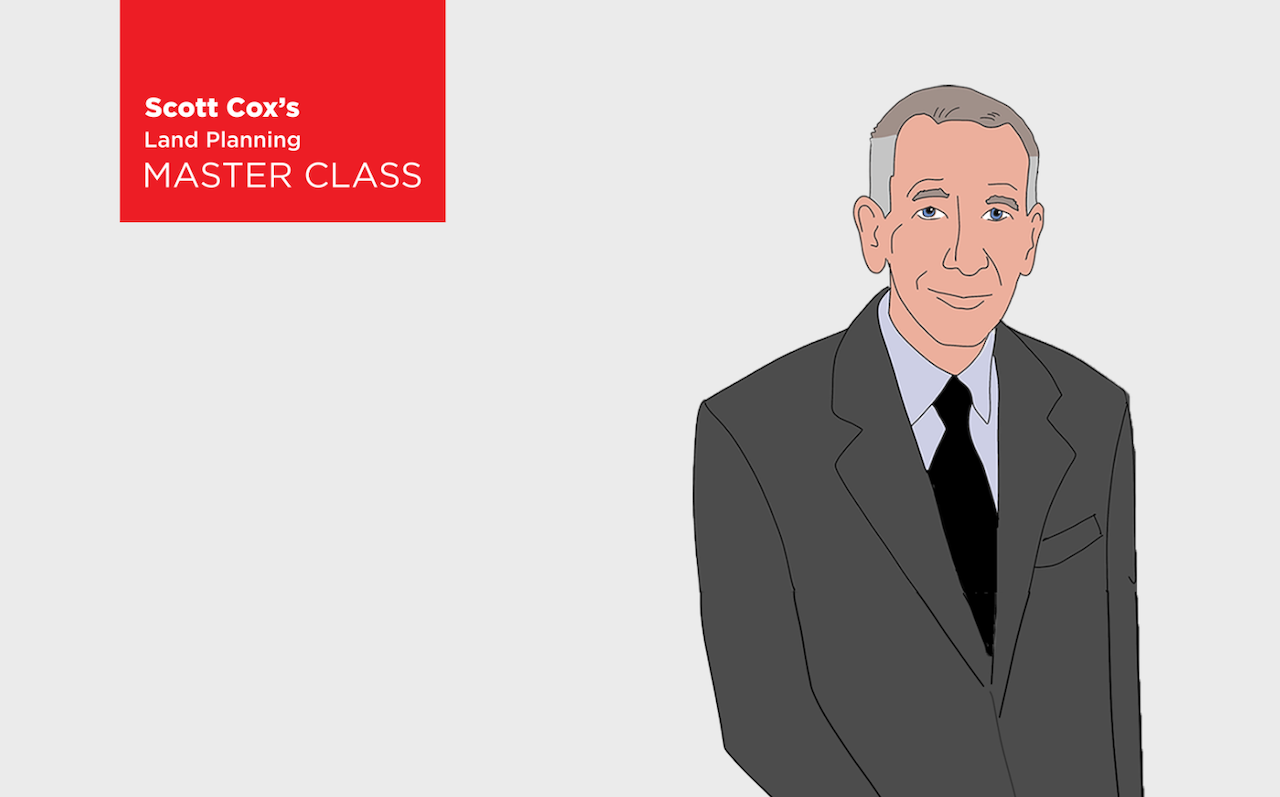Capital
Capital, Time, and Trade-Offs: New Realities of Builder Growth
Private builders can still scale, but not on yesterday’s formulas. Scott Cox details the pitfalls of institutional capital, the “too many hands in the cookie jar” problem, and how land partnerships, fee-building, and market positioning offer viable paths forward.

A recent conversation with a friend regarding capital options for growing a builder brought up some points that might be worth sharing in a column. While every situation is different, some commonalities in the business impact this discussion and would be generally valuable to others considering this topic.
As is often the case, a brief history lesson on how builders have grown their businesses in the past provides a useful starting point for the discussion.
Historical Growth Models
Finished Lot Markets with Rolling Takedowns. In areas with an ample supply of finished lots that could be acquired on a rolling takedown basis, capitalizing a builder took relatively little money. It could often rely on the founder's and/or friends and family capital. With a short timeframe to develop basic product, put up a model and a couple of spec homes, cash flow could be recycled into new projects in less than a year, achieving the ideal scenario of growing through retained earnings.
Landowner Partnerships. A variation on the first option involved convincing a landowner to venture with a builder by putting lots into the home building company, with some or all the return coming through home closings. In some cases, this created a true joint venture where the landowner wanted to participate in both the homebuilding profits and the ultimate valuation of the builder when the entity was sold. In other cases, it simply meant participating in home profits for differing lot payment structures.
Option and Development Model. In many cases, even without an ample supply of finished lots, land could be optioned and developed cheaply, keeping capital requirements manageable. More money was needed, but not overwhelming amounts. Short timeframes for approval and development mean cash was returned and recycled in 18-24 months. It took longer to achieve growth through retained earnings and might have involved more outside capital, but it remained doable.
Local Investors. Entity-level investments of a larger size from local family offices or investors worked well when the initial capital was sufficient to fund growth and the investor was more focused on multiples than IRR.
While there are many variations on these themes, some combination of these approaches was often in play.
The Post-GFC Era: Institutional Capital Challenges
During the past cycle (post-GFC), these options continued to be pursued alongside the advent of more institutional capital in entity-level finance. While there are exceptions, most of these arrangements did not go remarkably well. It seemed like the pieces were in place for this to be a successful strategy—why did most struggle?
The theory was that with solid entity-level capital, builders would pick up cheap lots and, once again, would soon be growing on retained earnings. Unfortunately, this did not last long. Once public builders became avid buyers of finished lots and bid prices up, many of these PE-funded firms had to move to developing lots and then entitling and developing lots. This required far more capital than anticipated due to buying land in chunks, and the extended timeframe for projects pushed out the cash "recycle date" by several years. But growth had to be funded in the meantime.
Some capital providers put much more money into these builders than they had intended, while others started to source project-level capital to grow. The first option often resulted in diluting the builder’s ultimate returns. The second, in greatly reducing the profits to the entity. Further, with the end game being to sell the entity, acquirers of builders dislike their having JVs, which often results in buyouts of projects that further reduce the potential returns of the builder acquisition. The net results for each were often disappointing for all concerned.
It is better to work with what is currently possible than to pine for the past." - Scott Cox
The Fundamental Problem: Cash Flow Timing
The fundamental problem was one we have discussed in other contexts regarding company structure, velocity, etc. Namely, with projects taking 5+ years from beginning to end, and a JV structure that often results in builder cash flow primarily coming from the tail end of the project, cash recycling begins in year 4. It simply does not work for growth. So, everyone involved ended up needing more capital and for longer than anticipated—not a path to strong IRRs.
Current Market Realities
So, what are the options today? Surviving off finished lots is essentially a thing of the past in primary housing markets, and "cheaply" optioning land is becoming rarer.
Institutional money at the entity level is not likely to work unless you can find an investor focused on multiples, not IRRs. If ROAs in this business were running 15% and are now drifting down with lower margins and slower turns, and preferred returns are double-digit, it is hard to outrun the preferred return and have much left over. It is doubly hard (impossible?) if the entity-level capital is insufficient for all growth, and project-level financing (beyond basic debt) will also be required. Too many hands in the cookie jar.
In theory, one could reduce the project capital portion of the equation by land banking, but it takes a pretty good balance sheet to get even a mid-teens rate (compared with public builders' 10%-to-11%). If you are starting up with modest entity capital, the land bank deals may have kickers from the sale of homes and start to yield more like equity than higher-cost debt.
Debt funds exist to fill project gaps, but again, at mid-teens returns, they are not leaving much at the entity level, especially given today's falling margins.
The local family office route is still theoretically viable. Still, given the size of the numbers required to play today, it will take a much bigger investor to provide sufficient funds than it did in 2013.
In select circumstances, Japanese companies have provided an opportunity to have a minority stake in exchange for growth capital. A complete discussion of the pros and cons of that option is beyond the scope of this column, but especially for those wishing to at least partially cash out without a full exit, it’s a potential option.
First Steps
Be Realistic About Timeframes. I hear new builders discussing the possibility of building and selling the business in 5-to-6 years. That rarely happened, and most people have a recency bias from seeing the big victories of builders selling for multiples of book value, forgetting the years of break-even performance needed to cover overhead and the struggle to grow. Also, remember, they likely had years of higher leverage than they would have preferred. You cannot de-lever until you stop growing.
Consider Time and Taxes. When I discuss this with builders, the two things they often overlook are timeframes and taxes. First, everything takes longer, as noted above, and it is easy to forget when planning that we are a business burdened with ordinary income, which means that 35%-to-40% of the cash we want to recycle goes to the state and federal IRS.
To illustrate the extreme case with some “yellow pad math:” think about having a JV project partner who gets 60% of the profit (profit plus pref), then the tax man takes 40% of the remaining 40%, and then the entity partner takes 60% of what is left (assuming project G&A fees equaled actual G&A — not likely in the early days). That leaves approximately 10% to the operator.
Repeating myself: the returns do not support that many grabbing hands.
Recommended Strategies
Focus First on Building a Good Homebuilder. That takes time and practice. Get good, do more, start to build retained earnings, and reduce reliance on outside capital, or at least shift it to lower-cost capital that is easier to exit if the company is sold. Think 10 years, not 5.
Take Advantage of Fee-Building Opportunities. You will not get rich, but again, you are trying to create a better builder, and it covers overhead. It is hard enough to raise entity capital without using it primarily to support overhead beyond what the projects cover.
Look for Opportunities to Partner with Land Owners. Share the profits. Again, hard to get rich, but capital-light.
If You Find an Entity Investor. Good for you. But try to avoid overly optimistic projections of how much money you will need and how fast you can exit. Not just to avoid disappointment, but to prevent getting yourself in a box where you do not have enough money to grow, but there is no room for new investor capital. To beat a dead horse: try to find someone more focused on multiples rather than IRR, as this is likely to take longer than you think or hope.
Where and What Matters as Much as How
In many ways, the most intriguing question is less the "how" than the "where and what." All the challenges I have been describing are magnified in our primary markets and core product types. The competition for lots is ferocious, and the homebuilding competitors are top-notch. Capital for land banking by the big players is cheap and plentiful. It is a tough place to start.
Picking Your Market. This is simply an observation, not data. Still, many of the big success stories of builders growing to a good size and selling out at a nice premium lately are coming from secondary and tertiary markets. Markets where, when the builder started, competition was more limited and the price of land and lots was still low. Most builders start a company where they already are. It makes sense—after all, they know local subs, land use politics, land owners, etc. And that has big value. But it begs the question: does that outweigh other macro factors?
Finding Your Product Niche. What product types and niches are you pursuing? The most overused phrase in home building is "brand." But it is legitimate to find product and locational niches that other builders are not fully exploiting. As a friend says, it is probably better to go where the public builders cannot, should not, or will not.
The field for this has narrowed, as many public builders are now chasing segments they previously did not pursue, and there is a case to be made that if a niche is deep enough, once you prove it works, they will arrive. But if you are far enough out in front, it could be defended. Ultimately, you should think of your business as having key skills and attributes, and when it is time to change niches or strategies, do so. No good idea remains good forever. Be flexible and adaptable.
The Takeaway
None of these is a magic bullet, because there is not one. Given the capital needs and timeframes for projects, it is harder than it used to be to grow a builder in a primary market. That is just math. But it is better to work with what is currently possible than to pine for the past.
MORE IN Capital
Capital Optionality Is 2026's Winning Homebuilder Strategy
Tony Avila breaks down the competitive edge capital brings—and how private builders can win big in 2026’s reshaped landscape.
How Developers Can Miss Millions In Infrastructure Recovery
Too many landowners front infrastructure costs without a plan to get paid back. Carter Froelich explains how to set up recovery mechanisms early — before it’s too late.
Toll Brothers Exits Apartments, Sharpens Playing To Strengths
The $347 million sale of Toll Brothers’ Apartment Living platform to Kennedy Wilson transfers $5.2 billion in assets under management and a national development team. For Toll, it’s less about retreat than an embrace of its cultural pedigree of focus, discipline, and luxury market leadership.
